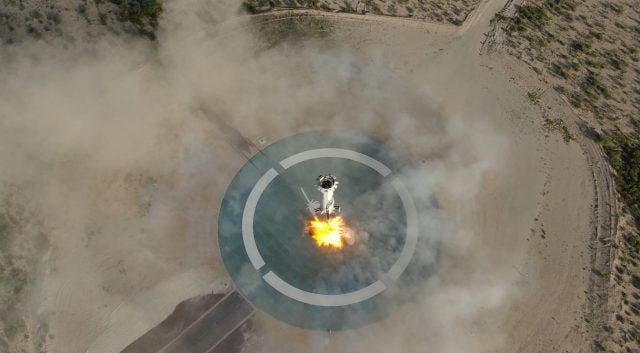Innovative Autonomous Landing System to be Tested by NASA
Written on
Chapter 1: Introduction to SPLICE
In the realm of space exploration, precision is paramount. A seemingly insignificant rock or uneven terrain can jeopardize a robotic mission, especially when there’s no one around to assist in recovery. To address this, NASA is advancing a new landing technology known as Safe and Precise Landing — Integrated Capabilities Evolution (SPLICE). This initiative will be put to the test using Blue Origin's New Shepard rocket.
Section 1.1: The Challenge of Distant Landings
Landing spacecraft on far-off celestial bodies presents unique difficulties. With targets often light minutes away, real-time control during descent becomes impossible—commands would be ineffective by the time they arrive. Thus, SPLICE is engineered for full autonomy, incorporating terrain-relative navigation, Doppler lidar, hazard detection lidar, and an advanced landing computer.
Subsection 1.1.1: Enhancing Landing Zone Selection

NASA typically selects landing sites based on safety protocols. While operators may wish to land near fascinating geological features, such decisions can put missions at risk. SPLICE aims to allow spacecraft to target more complex and exciting landing areas. Before integrating this system into future missions, NASA must first validate its technologies through testing, starting with the upcoming New Shepard launch. However, only three of the four SPLICE features will be operational during this initial test, with the hazard detection lidar scheduled for a later trial.
Chapter 2: Testing SPLICE with New Shepard
Following the launch, the New Shepard rocket will ascend to the edge of space. As it returns to Earth, the SPLICE components will activate as they would in an actual mission scenario. The terrain-relative navigation system will utilize previously captured surface images to recognize features during descent. Subsequently, the Doppler lidar will emit signals towards the ground, providing precise location and velocity data to the lander.
All sensor information feeds into a sophisticated landing computer, which employs innovative algorithms to determine appropriate landing zones in real-time. However, the computer on the New Shepard is merely a placeholder; the actual SPLICE hardware is still under development. Any technology destined for space must possess unparalleled reliability and must be resistant to radiation, which necessitates additional time for refinement.
If the SPLICE system performs successfully during this test, NASA can proceed with finalizing its design and integrating it into forthcoming missions. With this advancement, the daunting task of landing invaluable, multi-million-dollar robotic explorers could become significantly less stressful.
Now read: First New Venus Mission to Hunt for Alien Life Already Planned SpaceX Nails Another 150-Meter Starship Flight Test Follow the Perseverance Rover in Real-Time With NASA’s Eyes Simulation
The first video titled "Watch Blue Origin test the Crew Capsule on their New Shepard Rocket!" provides a closer look at the testing process and innovations being implemented by Blue Origin.
The second video titled "Watch Blue Origin test a landing system for NASA with their New Shepard rocket!" showcases the specific landing system developments that are crucial for future space missions.